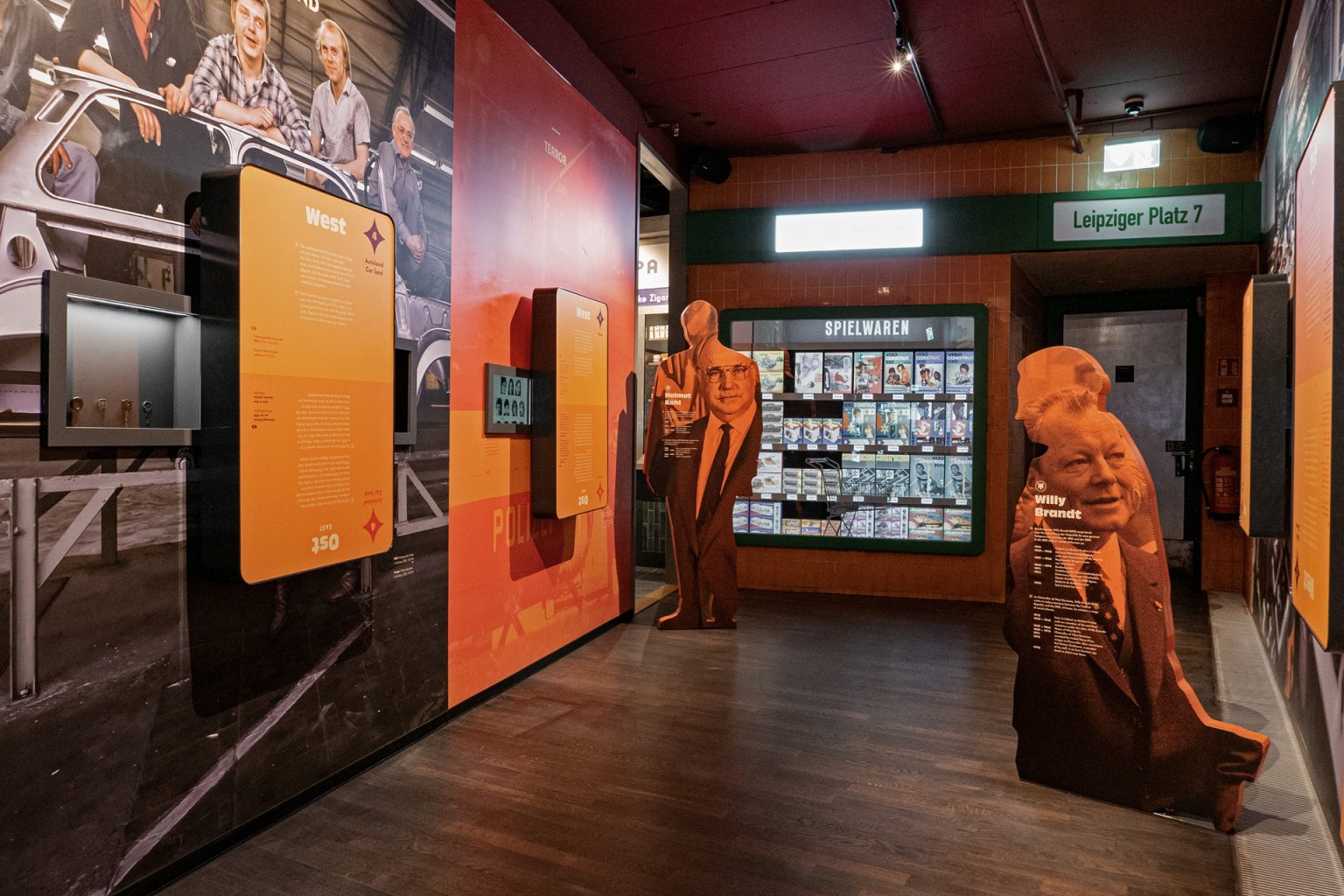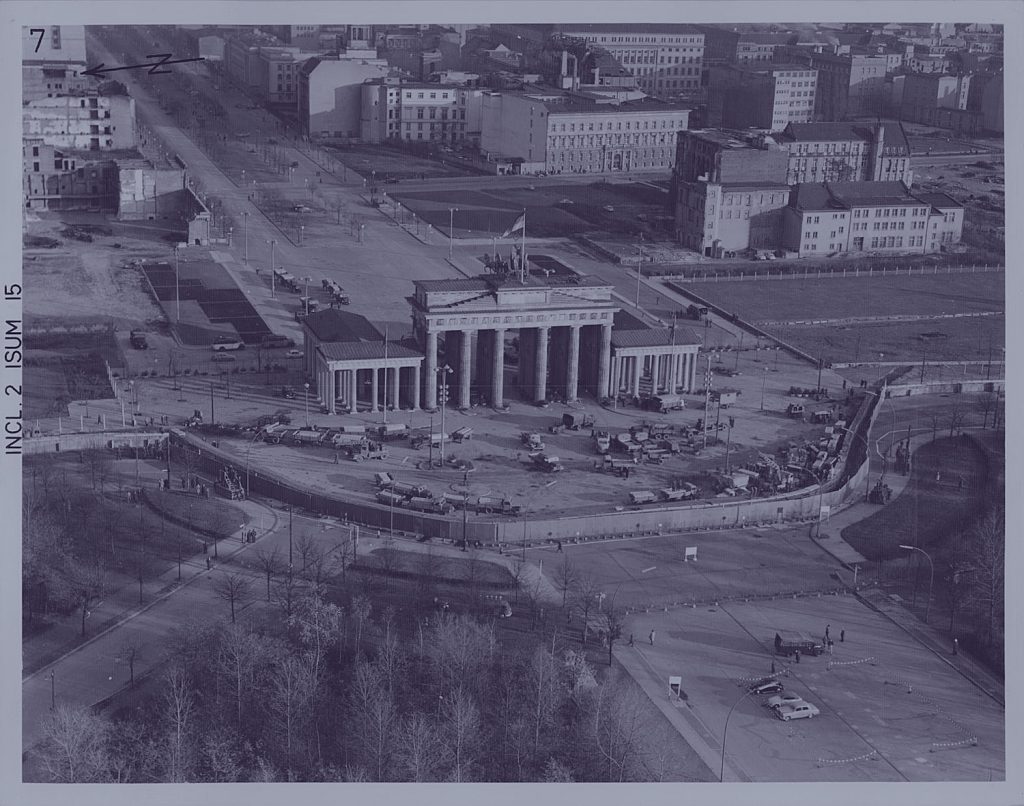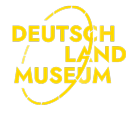
The two Germanies
1972
The two Germanies
Social change in East and West
The construction of the Berlin Wall in 1961 dashed all hopes of a rapid German reunification. It was only in the early 1970s under West German Chancellor Willy Brandt that political rapprochement between the two states began. In domestic terms, social challenges and global political changes affected both East and West.
1960s: the Berlin Wall and student unrest
The mass exodus of skilled East German labour to the prosperous West posed major problems for the DDR. Although the East German government closed the inner-German border in the 1950s, the Berlin border crossings remained open. The construction of the Berlin Wall on 13 August 1961 closed this last route of escape from the DDR and cemented the division of Germany.
With the inner-German border turned into a death trap by minefields, barricades and sharpshooters, only a few East German citizens attempted to escape. Internal dissent and opposition was suppressed by the vast surveillance apparatus of the Ministry for State Security (Stasi). The result was stabilization of the political and economic situation in East Germany.
The end of the flow of East German workers to West Germany meant that its booming economy became even more dependent on the recruitment of workers from outside Europe, who enriched West German society with their culture and culinary tastes. Whilst student unrest after 1968 led to social reforms, from the more radical elements of the student movement emerged the Baader-Meinhof Gang, which subjected West Germany to a campaign of terror.

The Berlin Wall in front of the Brandenburg Gate in November 1961 Photograph, Intelligence Reports US Army, 1961 (source: National Archives Catalog, 6003843)
Neue Ostpolitik: the beginning of German rapprochement
West German Chancellor Willy Brandt’s Neue Ostpolitik (new eastern policy) succeeded in reducing tensions between the two German states, and culminated in the signing in 1972 of the “Basic Treaty” normalizing relations between West and East Germany. Two years earlier in December 1970, Brandt fell to his knees in front of the memorial to the victims of the Warsaw ghetto uprising, symbolically asking the world for forgiveness for the crimes committed by the Third Reich.
With the economies of both East and West Germany slowing significantly by the 1970s, unemployment rose in both states. The increasing reliance on nuclear energy in West Germany, due in part to the international oil crisis, led to the formation of an ecology movement, which culminated in the founding of the Green Party. Increasing shortages in the East German economy caused growing dissatisfaction amongst ordinary citizens.

More than 100,000 East Germans in Leipzig protesting for political reform Photograph by Friedrich Gahlbeck, October 1989 (source: Federal Archives, picture 183-1989-1023-022 via Wikimedia Commons)
Responding to Michael Gorbachev’s reforms in the Soviet Union, ordinary East Germans flocked to the long-suppressed political opposition. The East German state was unable to coerce the thousands of its citizens demonstrating for reforms. A peaceful revolution finally heralded the end of the DDR.
Share article
1972
In a mutual acceptance of peaceful coexistence, West and East Germany signed the Basic Treaty which regulated the co-operation and sovereignty of both states.
Epochs in the museum

About the Deutschlandmuseum
An immersive and innovative experience museum about 2000 years of German history
The forest of the Varus Battle
Knowledge is just one click away
Embark on a journey through 2,000 years of German history. One country, 12 epochs. You’re invited to experience the Epoch Weeks at the Deutschlandmuseum. Every week we showcase an epoch that is also on display in the Deutschlandmuseum.
FAQ
The Berlin Wall divided the city for the 28 years of its existence from its construction on 13 August 1961 until its fall on 9 November 1989.
With hundreds of thousands of East Germans protesting for political change, the East German government had little choice but to rescind its ban on travel to the West. The fall of the Berlin Wall on 9 November 1989 marked the beginning of the end for Communism in the DDR; East Germany officially joined the Federal Republic of Germany on 3 October 1990.


